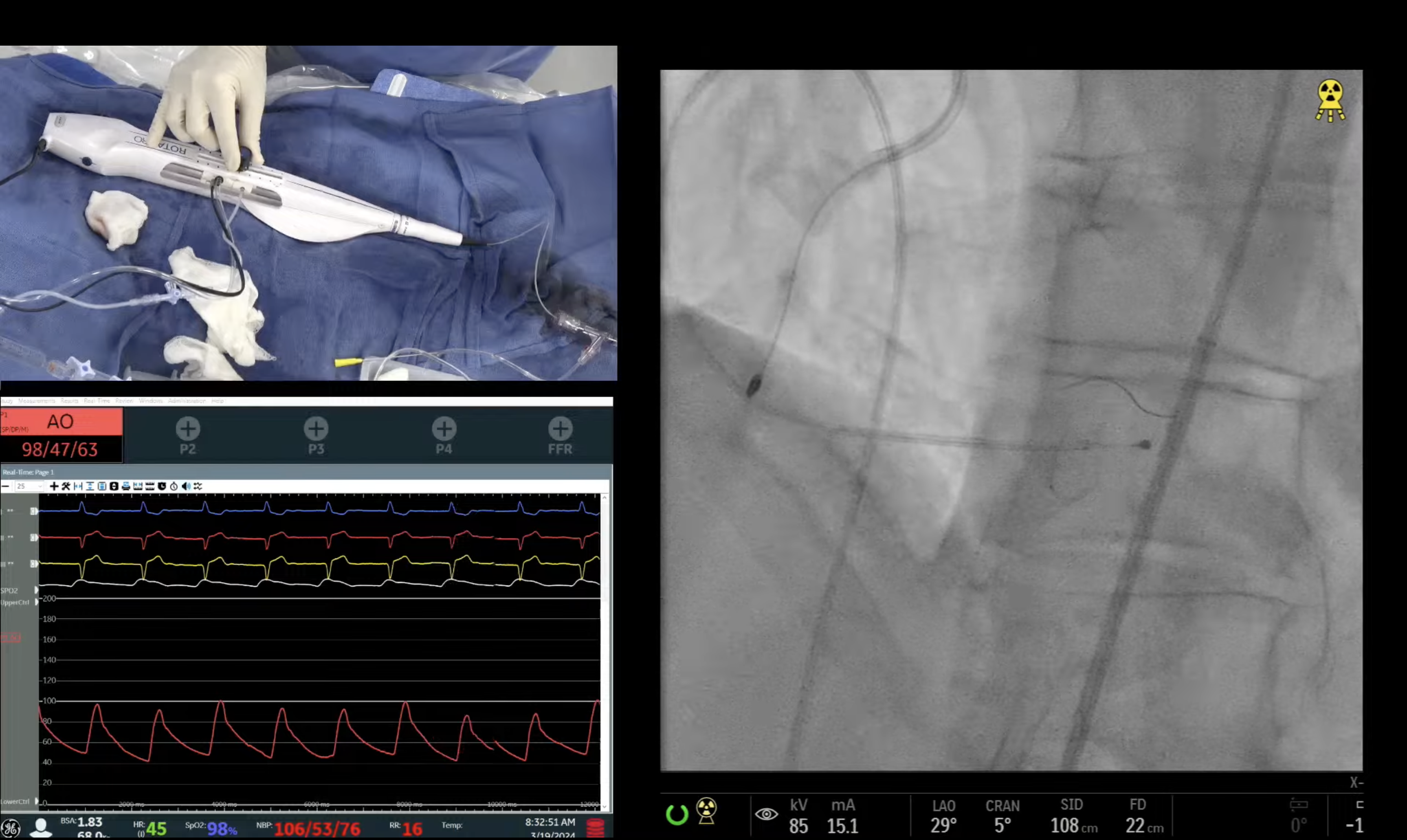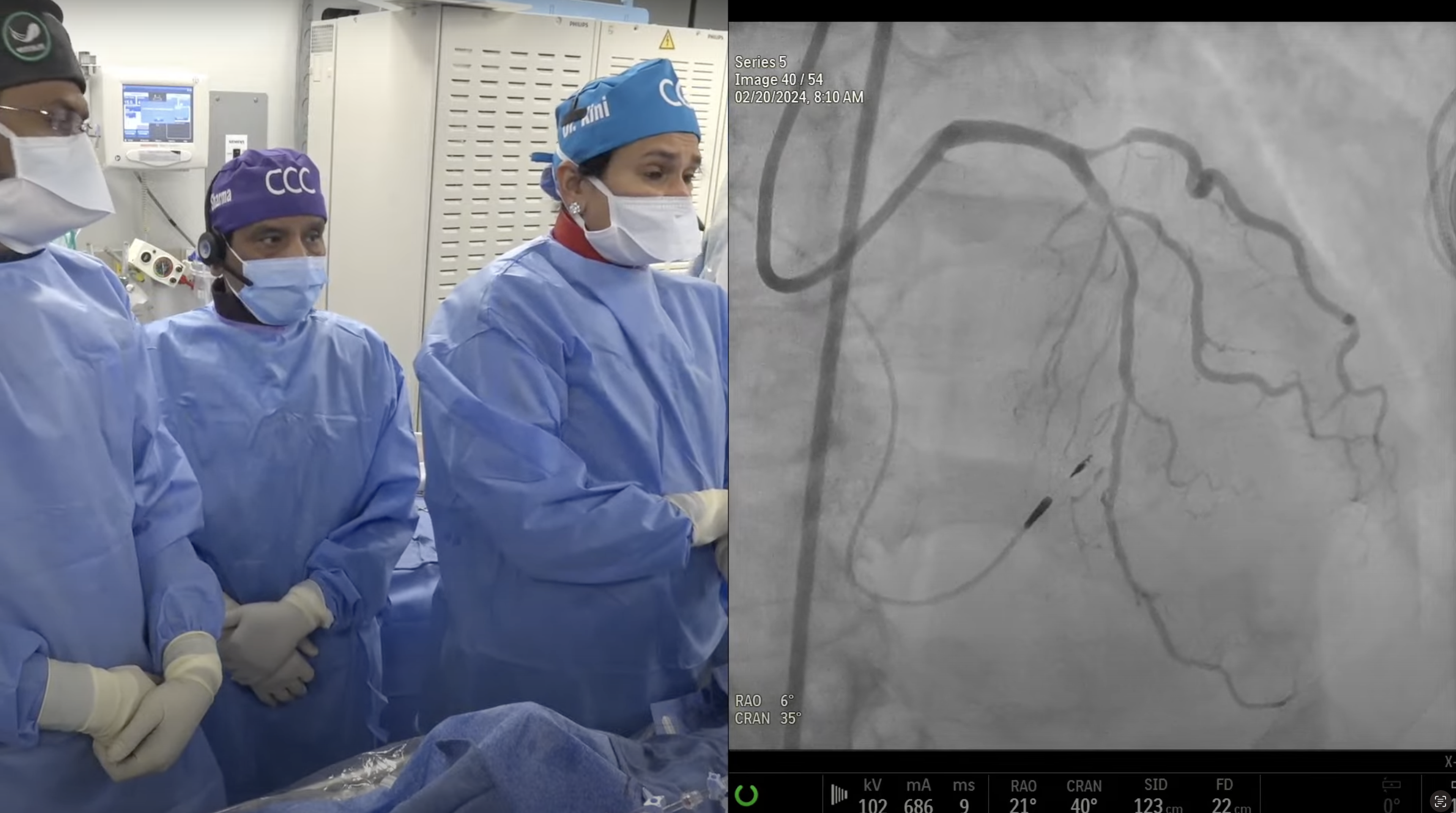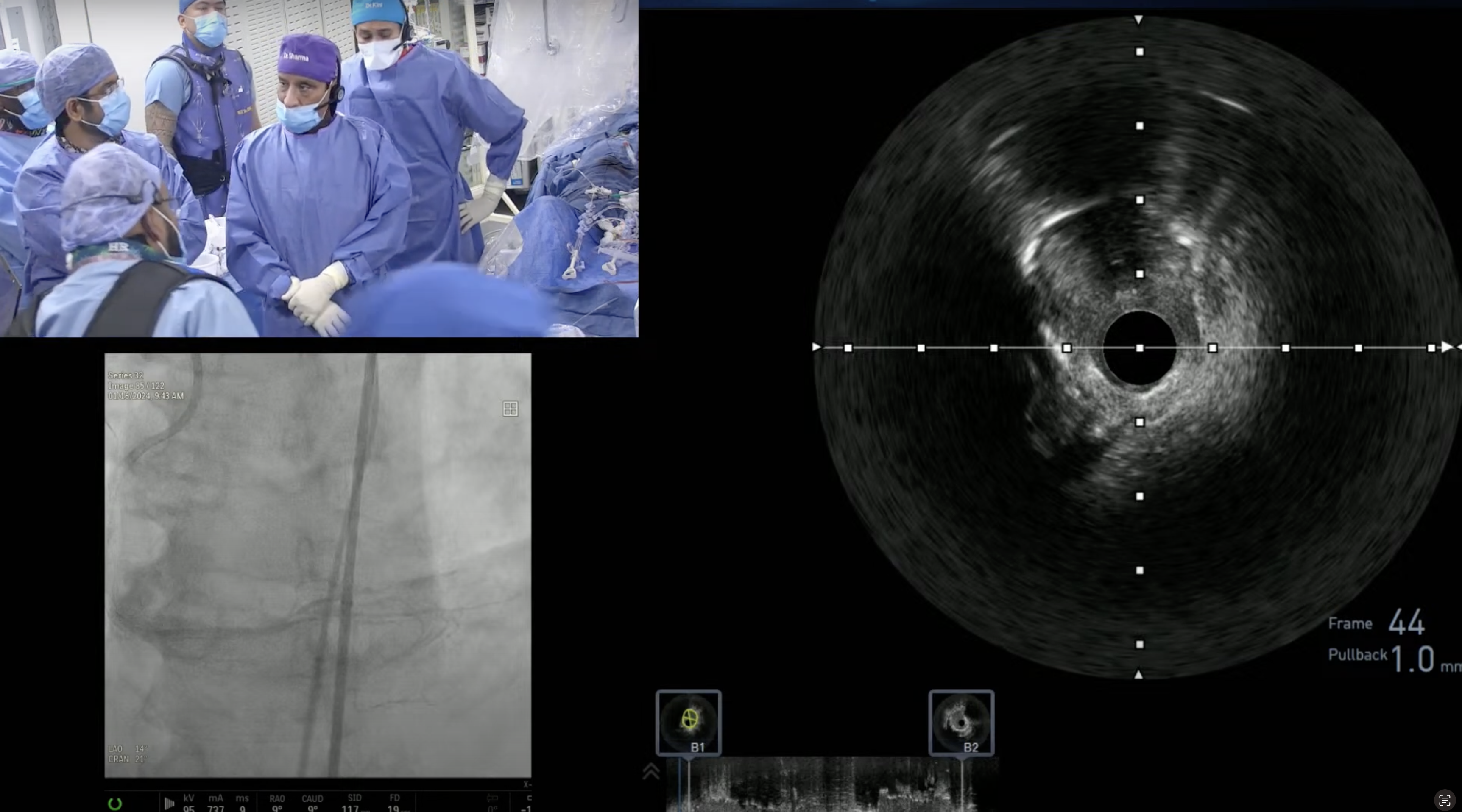50-year-old female with new onset Class II angina and strongly positive stress MPI for multivessel myocardial ischemia with TID. A Cardiac Cath on June 26, 2019 revealed 3V CAD: 70% severely calcific prox LAD with diagonal bifurcation, 80% LCx-LPL, 80% mid RCA with SYNTAX Score of 23 and LVEF of 60%. Patient underwent successful DES PCI to mid RCA with excellent results. Patient is now planned for FFR & OCT guided staged PCI of LAD diagonal bifurcation using orbital atherectomy and 2-stent (mini-crush) technique.
Q&A
Q
Overall, how much is Orbital Atherectomy (OA) use at Mt. Sinai?
A.
At MSH we use atherectomy in about 22% of 320-340 PCI cases per month (n= 70 cases).
Of this RA in 70%, OA in 28% and ELCA in 2% of cases.
Q
And of Rotational Atherectomy (RA)?
A.
At MSH we use atherectomy in about 22% of 320-340 PCI cases per month (n= 70 cases).
Of this RA in 70%, OA in 28% and ELCA in 2% of cases.
Q
How much will this change in 3 years?
A.
I expect atherectomy volume and % at MSH will continue to rise in next 3 years, because of selective referral of these calcified complex cases/pts from other interventionalists.
Q
What factors are contributing to this change?
A.
A large number of interventionalists, do not want to learn or do atherectomy and hence will refer them to ‘Atherectomy center of Excellence’ like MSH. It is good for all; doctors, pts and MSH by providing the best and safest treatment in the complex anatomy.
Q
What are the top three technical tips about OA that you would like to share?
A.
Top three technical tips for OA are; slow advancement (1mm/sec), slow speed (80k rpm only) and 3-5 times ablation across the lesion due to differential vertical motion of the OA crown.
Q
Can you explain about crown size and sizing?
A.
We have only one OA crown size (1.25mm) which can give post procedure MLD of 1.6-1.7mm at 80K speed and up to 1.9mm MLD with 120k speed. Another device called Micro-crown (additional ablative surface at the tip) will not be released in USA.
Q
And the dedicated wire?
A.
OA is a very effective device and 80k speed is sufficient even in large vessels and is associated with less complications (especially perforations).
Q
How do you beneficially use the speed of OA?
A.
OA is a very effective device and 80k speed is sufficient even in large vessels and is associated with less complications (especially perforations).
Q
What has been your worst complication with OA?
A.
Large coronary perforation causing hemodynamic collapse is the worst complication of OA.
Q
Which seems better for severe calcification - of course, we saw your algorithm. RA or OA?
A.
Concentric severe calcification of >270 degree arc is ideal for OA and others are good for RA.






Excellent